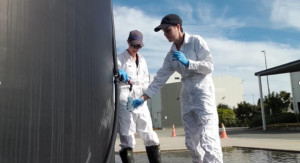We recently had some pleasing results for our District from the 2022 National Survey of Pesticides, emerging organic contaminants (EOCs) and per- and polyfluoroalkyl substances (PFAS).
Since 1990, we have participated in nine groundwater pesticide surveys coordinated by Crown Research Institute – ESR (Environmental Science and Research).
A small number of groundwater sites in past surveys have had pesticide residues detected but all were well below the maximum acceptable values for New Zealand Drinking Water Standards.
In 2022, we sampled 22 groundwater sites for pesticides across the Tasman region, 16 of these sites were also sampled for PFAS, and 10 sites were also tested for EOCs.
Pesticide and PFAS testing results indicated there were only two sites which had a pesticide detected in our region. Both of these sites were in shallow groundwater; an irrigation well (5m deep) in the Waimea Plains and a Council monitoring bore (old driven fire bore, 6.2m deep) in Tākaka.
PFAS are a group of chemicals used to make products that resist heat, oil, stains, grease and water. There were no PFAS detected in any of our region’s bores.
The irrigation well in the Waimea Plains had a detection for desethylterbuthylazine (DET) at a concentration level 160 times lower than maximum acceptable values.
The Tākaka monitoring bore had a minor detection of terbuthylazine at a concentration level 400 times lower than the maximum acceptable values. This is the first time that a pesticide had been detected at this bore.
Terbuthylazine and DET are selective herbicides, used for grass and broadleaf weed control.
We are still waiting for the report from ESR regarding the 2022 EOC results.


